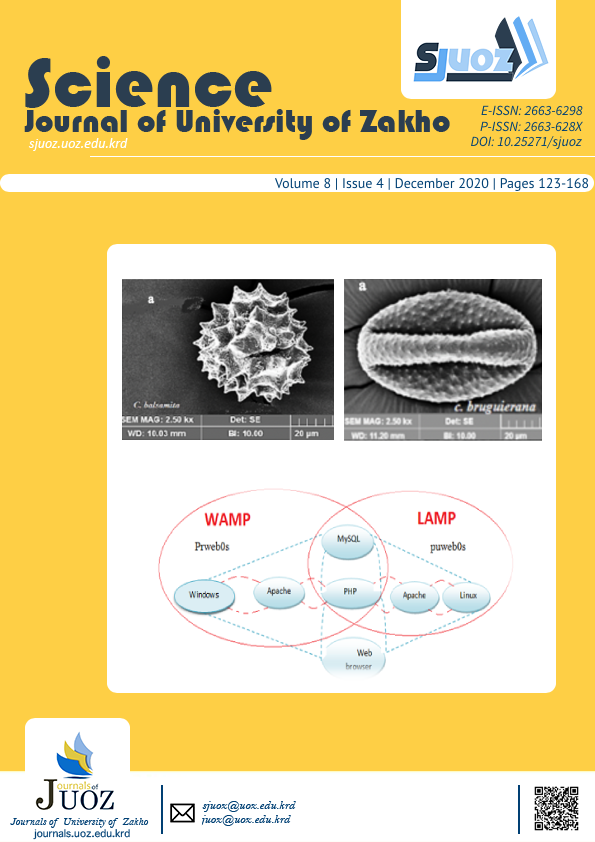The Effects Of N-GaAs Substrate Orientations on The Electrical Performance of PANI/N-GaAs Hybrid Solar Cell Devices
Abstract
This paper reports the fabrication and electrical characterization of hybrid organic-inorganic solar cell based on the deposition of polyaniline (PANI) on n-type GaAs substrate with three different crystal orientations namely Au/PANI/(100) n-GaAs/(Ni-Au), Au/PANI/(110) n-GaAs/(Ni-Au), and Au/PANI/(311)B n-GaAs/(Ni-Au) using spin coating technique. The effect of crystallographic orientation of n-GaAs on solar cell efficiency of the hybrid solar cell devices has been studied utilizing current density-voltage (J-V) measurements under illumination conditions. Additionally, the influence of planes of n-GaAs on the diode parameters of the same devices has been investigated by employing current-voltage (I-V) characteristics in the dark conditions at room temperature. The experimental observations showed that the best performance was obtained for solar cells fabricated with the structure of Au/PANI/(311)B n-GaAs/(Ni-Au). The open-circuit voltage (Voc), short circuit current density (Jsc), and solar cell efficiency () of the same device were shown the values of 342 mV, 0.294 mAcm-2, 0.0196%, respectively under illuminated condition. All the solar cell characteristics were carried out under standard AM 1.5 at room temperature. Also, diode parameters of PANI/(311)B n-GaAs heterostructures were calculated from the dark I-V measurements revealed the lower reverse saturation current (Io) of 3.0×10-9A, higher barrier height () of 0.79 eV and lower ideality factor (n) of 3.16.
Full text article
References
Authors
Copyright (c) 2020 Haveen A. Mustafa, Dler A. Jameel, Hussien I. Salim, Sabah M. Ahmed

This work is licensed under a Creative Commons Attribution 4.0 International License.
Authors who publish with this journal agree to the following terms:
- Authors retain copyright and grant the journal right of first publication with the work simultaneously licensed under a Creative Commons Attribution License [CC BY-NC-SA 4.0] that allows others to share the work with an acknowledgment of the work's authorship and initial publication in this journal.
- Authors are able to enter into separate, additional contractual arrangements for the non-exclusive distribution of the journal's published version of the work, with an acknowledgment of its initial publication in this journal.
- Authors are permitted and encouraged to post their work online.

